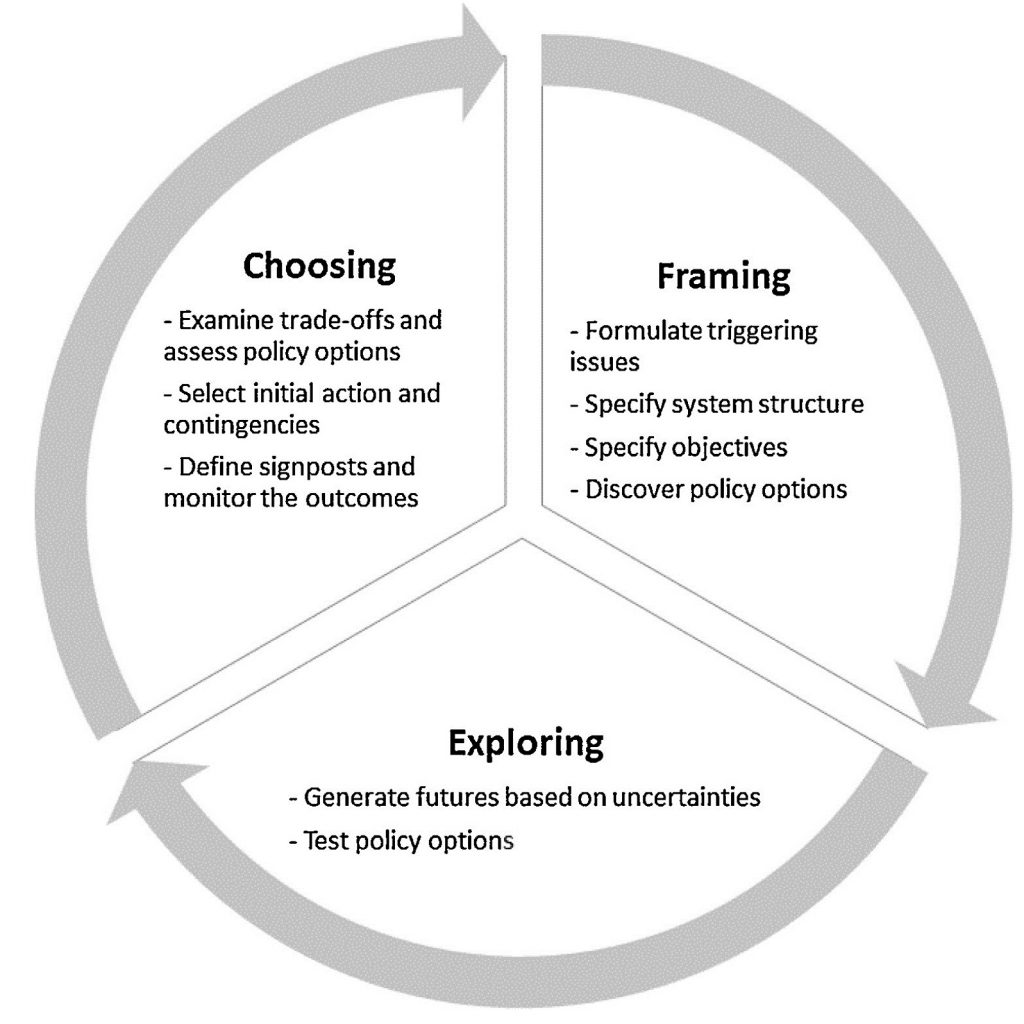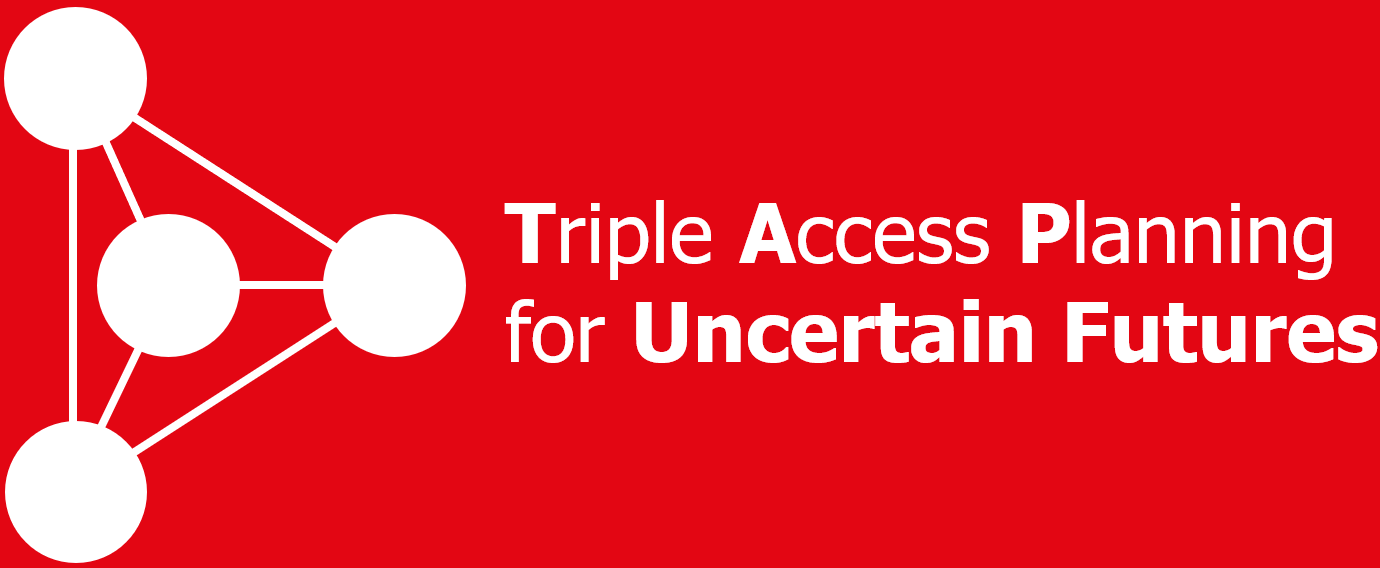Maha Attia, Sander Lenferink and Vincent Marchau, Radboud University
A goal of the TAP for uncertainty project is to offer support for planners in dealing with uncertainty, specifically for an integrated system of proximity, mobility and digital accessibility. In order to offer support for planners, we aim to develop and play serious games to stimulate learning. Game design always needs validation from expert practitioners to assess the learning challenges: who needs to learn, what needs to be learned, how can best be learned, how to measure learning? We discussed these questions with experts from practice in a Workshop aimed at collectively formulating design considerations for a game that stimulates learning on TAP for uncertainty.
The participants in our participatory workshop on game design indicate that practitioners struggle with taking uncertainty into account. It is therefore recommended to focus learning by following the basic approach for Decision Making under Deep Uncertainty (DMDU) in SUMP practice. The DMDU approach (see Figure 1) of three stages (framing, exploring, and choosing) (Marchau et al, 2019), that could function as parts of the game.

Figure 1: elements of the DMDU approach (Adapted by (Malekpour et al., 2020) from (Marchau et al., 2019).
Besides the approach to DMDU, there is a longlist of things that practitioners could potentially be learned, that were raised in the discussion. The main challenge for stimulating learning in a game is to keep it simple and focused. Therefore the participants suggest to clearly define the learning goal and learning outcomes for each stage, and base more specific game design choices on that.
Stage 1 (Re-)Framing:
The (re-)framing stage concerns a joint understanding of the system, its issues, and specifying a shared vision and policy options. In order to learn TAP for Uncertainty, the experts agreed that the learning outcome should be focused on adding the digital perspective to the existing land use-transport system view in practice, effectively moving from a double access to a triple access system. This means that a game on Framing has the urban planners (mobility and land-use) to explore the potential role of digital planning and the impact of digital access opportunities on their plan’s objectives, as well as be aware of their (partial) responsibility in creating digital policy options. So, having the game focused on the influence of digital on the SUMP might make it more relevant for planners to think of digital as an alternative way to reach their goals. For example, include innovative digital policy options on the game cards, or play the game without (and later with) a digital policy officer role player.
Stage 2 Exploring
The exploring stage is about generating TAS futures and test policy options against these futures The experts agree that the learning outcome should be to help practitioners consider what could go wrong with their policy options. In order to make this happen, it is crucial to enable practitioners to think broadly, i.e. about futures outside their current imagination. Only by doing so can they relate the explored uncertainties directly to the policy option in question. The exploring game could therefore concern thinking about the implications of uncertain conditions on the success of the policy options they are testing, or, in other words, by exploring in which future this option will fail (or succeed). This game must include the land use and mobility planners from stage 1, but these participants can be complemented with regional or national planners as well as representatives from other fields to allow broadening up the thinking about TAP for uncertainty.
Stage 3 Choosing
The final choosing stage concerns selecting initial measures and examining pathways that help reach the vision, given alternative futures. For this stage, the learning outcome should be on understanding adaptivity by creating pathways. This specifically should include thinking about signposts and triggers (i.e. the monitoring system), and responsive actions. In a game this can be done by selecting a promising initial option (from stage 2), and decide on contingent actions and adaptive pathways to pursue. This game could be made most specific by focusing on a local context, where actions have a direct effect on TAS.
Now what?
Based on the considerations above, three separate game workshops will be designed, which together offer a participatory DMDU approach to SUMP planning that is focused on TAP for uncertainty. These workshops will be held over the coming months with the Dutch cities involved, among which Utrecht and Nijmegen. We will keep you posted.
References
Malekpour, S., Walker, W., De Haan, F., Frantzeskaki, N., & Marchau, V.A. (2021) Bridging Decision Making under Deep Uncertainty (DMDU) and Transition Management (TM) to improve strategic planning for sustainable development. Environmental Science & Policy, 107, 158-167.
Marchau, V. A., Walker, W. E., Bloemen, P. J., & Popper, S. W. (2019). Decision making under deep uncertainty: from theory to practice. Springer Nature.
